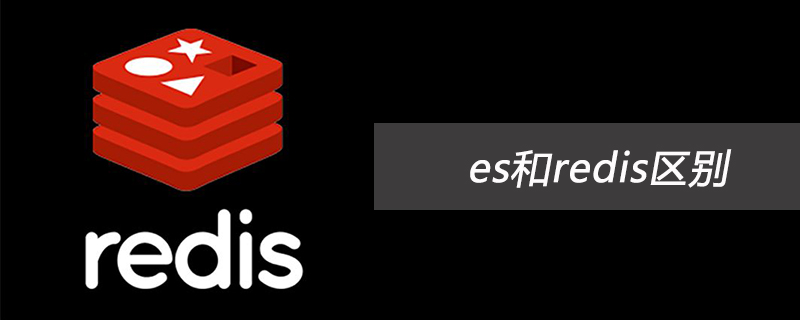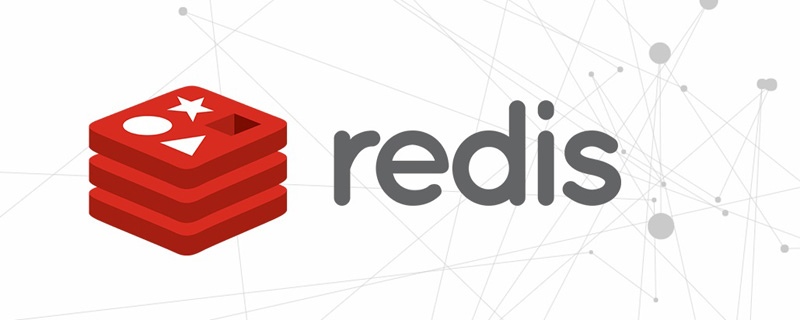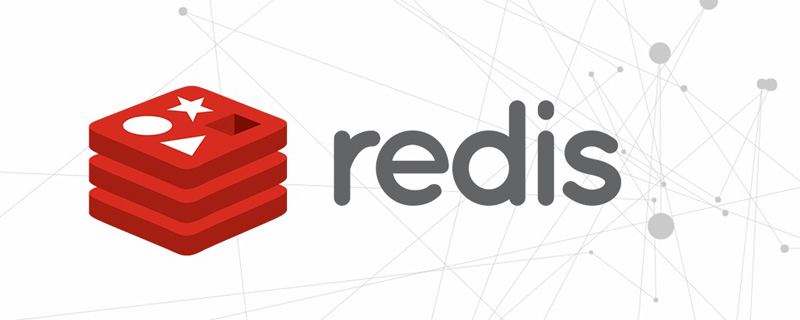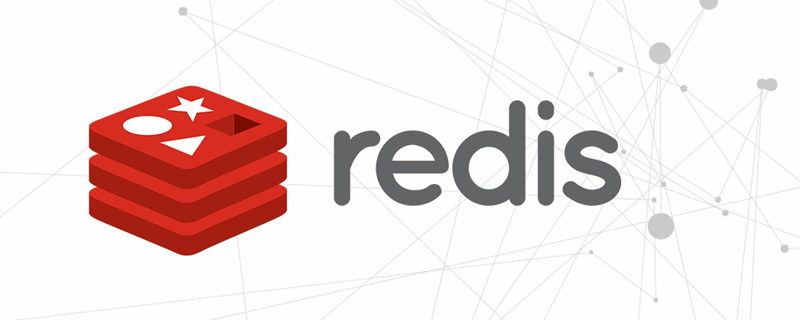
1. Foreword
Redis is an advanced key-value database. It is similar to memcached, but data can be persisted and supports a wide range of data types. There are strings, linked lists, sets and sorted sets. It supports calculating the union, intersection and complement (difference) of sets on the server side, and also supports a variety of sorting functions. So Redis can also be regarded as a data structure server. (Recommended: redis video tutorial)
All data in Redis is stored in memory and then saved to disk asynchronously from time to time (this is called "semi-persistent mode" "); You can also write every data change to an append only file (aof) (this is called "full persistence mode").
Since Redis data is stored in memory, if persistence is not configured, all data will be lost after redis restarts. Therefore, you need to enable the persistence function of redis and save the data to the disk. When redis restarts, Afterwards, the data can be recovered from the disk.
redis provides two methods for persistence, one is RDB persistence (the principle is to periodically dump Reids’ database records in memory to RDB persistence on disk), and the other One is AOF (append only file) persistence (the principle is to write Reids' operation log to the file in an appended manner). So what is the difference between these two persistence methods, and how to choose? Most of what I read on the Internet introduces how to configure and use these two methods, but there is no introduction to the difference between the two and what application scenarios they are used in.
2. The difference between the two
RDB persistence refers to writing the snapshot of the data set in the memory to the disk within a specified time interval. The actual operation process is Fork a child process and first write the data set to a temporary file. After the writing is successful, the previous file is replaced and stored using binary compression.

AOF persistence records every write and delete operation processed by the server in the form of a log. Query operations will not be recorded, but will be recorded in the form of text. You can open the file to view to detailed operation records.

3. Advantages and Disadvantages of the Two
What are the advantages of RDB?
1). Once this method is adopted, your entire Redis database will only contain one file, which is perfect for file backup. For example, you may plan to archive the last 24 hours of data every hour, and also archive the last 30 days of data every day. Through such a backup strategy, once a catastrophic failure occurs in the system, we can restore it very easily.
2). For disaster recovery, RDB is a very good choice. Because we can easily compress a single file and then transfer it to other storage media.
3). Maximize performance. For the Redis service process, when it starts persistence, the only thing it needs to do is to fork out the child process, and then the child process will complete the persistence work. This can greatly avoid the service process performing IO operations.
4). Compared with the AOF mechanism, if the data set is large, RDB startup efficiency will be higher.
What are the disadvantages of RDB?
1). If you want to ensure high availability of data, that is, avoid data loss to the greatest extent, then RDB will not be a good choice. Because once the system crashes before scheduled persistence, the data that has not had time to be written to the disk will be lost.
2). Since RDB assists in data persistence through fork child processes, if the data set is large, it may cause the entire server to stop serving for hundreds of milliseconds, or even 1 second. bell.
What are the advantages of AOF?
1). This mechanism can bring higher data security, that is, data persistence. Redis provides three synchronization strategies, namely synchronization every second, synchronization every modification and no synchronization. In fact, every second synchronization is also completed asynchronously, and its efficiency is also very high. The only difference is that once the system goes down, the data modified within this second will be lost. Every time a modification is synchronized, we can think of it as synchronous persistence, that is, every data change that occurs will be immediately recorded to the disk. Predictably, this approach is the least efficient. As for no synchronization, no need to say more, I think everyone can understand it correctly.
2). Since this mechanism uses the append mode for writing log files, even if there is a downtime during the writing process, the existing content in the log file will not be destroyed. However, if we only write half of the data in this operation and a system crash occurs, don't worry. Before Redis starts next time, we can use the redis-check-aof tool to help us solve the data consistency problem.
3). If the log is too large, Redis can automatically enable the rewrite mechanism. That is, Redis continuously writes modified data to the old disk file in append mode. At the same time, Redis also creates a new file to record which modification commands were executed during this period. Therefore, data security can be better ensured when performing rewrite switching.
4). AOF contains a clearly formatted and easy-to-understand log file for recording all modification operations. In fact, we can also complete data reconstruction through this file.
What are the disadvantages of AOF?
1). For the same number of data sets, AOF files are usually larger than RDB files. RDB is faster than AOF when restoring large data sets.
2). Depending on the synchronization strategy, AOF is often slower than RDB in terms of operating efficiency. In short, the efficiency of the synchronization strategy per second is relatively high, and the efficiency of the synchronization disabling strategy is as efficient as RDB.
The criterion for choosing between the two is to see whether the system is willing to sacrifice some performance in exchange for higher cache consistency (aof), or is willing to not enable backup in exchange for higher performance when write operations are frequent. When you run save manually, do the backup (rdb) again. RDB has a more eventually consistent meaning.
4. Commonly used configurations
RDB persistence configuration
Redis will dump the snapshot of the data set to dump.rdb in the file. In addition, we can also modify the frequency of Redis server dump snapshots through the configuration file. After opening the 6379.conf file, we search for save and can see the following configuration information:
save 900 1 #At 900 seconds (15 minutes) later, if at least 1 key changes, dump the memory snapshot.
save 300 10 #After 300 seconds (5 minutes), if at least 10 keys have changed, dump the memory snapshot.
save 60 10000 #After 60 seconds (1 minute), if at least 10000 keys have changed, dump the memory snapshot.
AOF persistence configuration
There are three synchronization methods in the Redis configuration file, they are:
appendfsync always #Every time there is Whenever data modification occurs, it will be written to the AOF file.
appendfsync everysec #Synchronize once every second. This policy is the default policy of AOF.
appendfsync no #Never synchronize. Efficient but data will not be persisted.
For more redis knowledge, please pay attention to the redis database tutorial column.
The above is the detailed content of Introduction to several methods of redis persistence. For more information, please follow other related articles on the PHP Chinese website!
 es和redis区别Jul 06, 2019 pm 01:45 PM
es和redis区别Jul 06, 2019 pm 01:45 PMRedis是现在最热门的key-value数据库,Redis的最大特点是key-value存储所带来的简单和高性能;相较于MongoDB和Redis,晚一年发布的ES可能知名度要低一些,ES的特点是搜索,ES是围绕搜索设计的。
 一起来聊聊Redis有什么优势和特点May 16, 2022 pm 06:04 PM
一起来聊聊Redis有什么优势和特点May 16, 2022 pm 06:04 PM本篇文章给大家带来了关于redis的相关知识,其中主要介绍了关于redis的一些优势和特点,Redis 是一个开源的使用ANSI C语言编写、遵守 BSD 协议、支持网络、可基于内存、分布式存储数据库,下面一起来看一下,希望对大家有帮助。
 实例详解Redis Cluster集群收缩主从节点Apr 21, 2022 pm 06:23 PM
实例详解Redis Cluster集群收缩主从节点Apr 21, 2022 pm 06:23 PM本篇文章给大家带来了关于redis的相关知识,其中主要介绍了Redis Cluster集群收缩主从节点的相关问题,包括了Cluster集群收缩概念、将6390主节点从集群中收缩、验证数据迁移过程是否导致数据异常等,希望对大家有帮助。
 Redis实现排行榜及相同积分按时间排序功能的实现Aug 22, 2022 pm 05:51 PM
Redis实现排行榜及相同积分按时间排序功能的实现Aug 22, 2022 pm 05:51 PM本篇文章给大家带来了关于redis的相关知识,其中主要介绍了Redis实现排行榜及相同积分按时间排序,本文通过实例代码给大家介绍的非常详细,对大家的学习或工作具有一定的参考借鉴价值,希望对大家有帮助。
 详细解析Redis中命令的原子性Jun 01, 2022 am 11:58 AM
详细解析Redis中命令的原子性Jun 01, 2022 am 11:58 AM本篇文章给大家带来了关于redis的相关知识,其中主要介绍了关于原子操作中命令原子性的相关问题,包括了处理并发的方案、编程模型、多IO线程以及单命令的相关内容,下面一起看一下,希望对大家有帮助。
 实例详解Redis实现排行榜及相同积分按时间排序功能的实现Aug 26, 2022 pm 02:09 PM
实例详解Redis实现排行榜及相同积分按时间排序功能的实现Aug 26, 2022 pm 02:09 PM本篇文章给大家带来了关于redis的相关知识,其中主要介绍了Redis实现排行榜及相同积分按时间排序,本文通过实例代码给大家介绍的非常详细,下面一起来看一下,希望对大家有帮助。
 一文搞懂redis的bitmapApr 27, 2022 pm 07:48 PM
一文搞懂redis的bitmapApr 27, 2022 pm 07:48 PM本篇文章给大家带来了关于redis的相关知识,其中主要介绍了bitmap问题,Redis 为我们提供了位图这一数据结构,位图数据结构其实并不是一个全新的玩意,我们可以简单的认为就是个数组,只是里面的内容只能为0或1而已,希望对大家有帮助。
 一起聊聊Redis实现秒杀的问题May 27, 2022 am 11:40 AM
一起聊聊Redis实现秒杀的问题May 27, 2022 am 11:40 AM本篇文章给大家带来了关于redis的相关知识,其中主要介绍了关于实现秒杀的相关内容,包括了秒杀逻辑、存在的链接超时、超卖和库存遗留的问题,下面一起来看一下,希望对大家有帮助。


Hot AI Tools

Undresser.AI Undress
AI-powered app for creating realistic nude photos

AI Clothes Remover
Online AI tool for removing clothes from photos.

Undress AI Tool
Undress images for free

Clothoff.io
AI clothes remover

AI Hentai Generator
Generate AI Hentai for free.

Hot Article

Hot Tools

Dreamweaver CS6
Visual web development tools

DVWA
Damn Vulnerable Web App (DVWA) is a PHP/MySQL web application that is very vulnerable. Its main goals are to be an aid for security professionals to test their skills and tools in a legal environment, to help web developers better understand the process of securing web applications, and to help teachers/students teach/learn in a classroom environment Web application security. The goal of DVWA is to practice some of the most common web vulnerabilities through a simple and straightforward interface, with varying degrees of difficulty. Please note that this software

WebStorm Mac version
Useful JavaScript development tools

Atom editor mac version download
The most popular open source editor

MinGW - Minimalist GNU for Windows
This project is in the process of being migrated to osdn.net/projects/mingw, you can continue to follow us there. MinGW: A native Windows port of the GNU Compiler Collection (GCC), freely distributable import libraries and header files for building native Windows applications; includes extensions to the MSVC runtime to support C99 functionality. All MinGW software can run on 64-bit Windows platforms.






